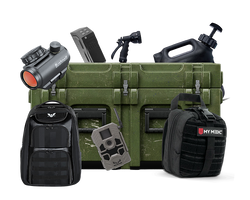Is Karate or Jiu Jitsu Better for Self Defense?
Table of Contents
- Introduction
- Historical Context and Evolution
- Training Styles and Techniques
- Advantages and Disadvantages
- Self-Defense Scenarios: Karate vs. Jiu Jitsu
- Choosing the Right Martial Art for You
- Conclusion
- FAQ
Introduction
Imagine walking down a dimly lit street when suddenly, a confrontation arises. Your heart races, and you instinctively think of how to defend yourself. In moments like these, the martial arts you train in can make a significant difference. The question many people ask is: Is karate or jiu jitsu better for self defense? This question is not just a matter of preference; it’s about understanding the effectiveness of different martial arts in real-world scenarios.
Both karate and jiu jitsu have their roots in ancient traditions and serve as powerful tools for self-defense. Karate, with its striking techniques, emphasizes distance and powerful punches and kicks. In contrast, jiu jitsu focuses on ground control and submission techniques, allowing practitioners to neutralize larger opponents through leverage and technique. This blog post will explore the nuances of each martial art, their effectiveness in self-defense situations, and the benefits they offer.
By the end of this article, you will gain a deeper understanding of these two popular martial arts, which will help you make an informed decision not only about self-defense but also about which art might resonate with you personally. We will cover the historical context and evolution of both martial arts, training styles, their advantages and disadvantages, and what each discipline can offer you as a practitioner.
Historical Context and Evolution
Karate: The Striking Art
Karate traces its origins back to the Ryukyu Kingdom (now Okinawa, Japan) in the early 20th century. It is a striking art that combines elements of indigenous Okinawan fighting styles with Chinese martial arts. Over the decades, karate evolved through various schools and styles, such as Shotokan, Goju-Ryu, and Wado-Ryu. Each style emphasizes different aspects of karate, from powerful strikes to fluid movements.
Karate gained immense popularity in the West during the 1970s and 1980s, largely due to movies like "The Karate Kid" and the rise of karate dojos in suburban America. Its structured training regime involves practicing katas (pre-arranged forms), kumite (sparring), and kihon (basics), which help develop striking techniques, timing, and discipline.
Jiu Jitsu: The Grappling Art
Brazilian Jiu Jitsu (BJJ) emerged from Japanese jiu jitsu in the early 20th century when Mitsuyo Maeda introduced the art to Brazil. The Gracie family further developed BJJ, focusing on leverage, ground fighting, and submission techniques. Unlike karate, which emphasizes striking from a distance, BJJ is designed for close combat, allowing smaller individuals to successfully defend against larger opponents.
BJJ gained massive popularity in the 1990s, particularly after Royce Gracie showcased its effectiveness in the Ultimate Fighting Championship (UFC). The art emphasizes live training—rolling with resisting opponents—which enhances the practitioner's ability to think and react under pressure.
Training Styles and Techniques
Karate Training
Karate training typically involves three main components:
-
Kihon (Basics): This includes practicing fundamental techniques such as punches, kicks, blocks, and stances. Mastery of these basics is crucial for effective execution in combat situations.
-
Kata (Forms): Katas are pre-arranged sequences of movements that simulate combat against imaginary opponents. They help practitioners develop muscle memory, rhythm, and timing.
-
Kumite (Sparring): Kumite is the practical application of techniques learned in kihon and kata. Practitioners engage in controlled sparring sessions to test their skills against real opponents, enhancing their ability to respond in actual confrontations.
Jiu Jitsu Training
BJJ training is structured around three key components:
-
Drilling Techniques: Practitioners learn various techniques, such as joint locks, chokeholds, and positional escapes. Drilling these moves helps ensure proficiency and muscle memory.
-
Rolling (Sparring): Live sparring is a hallmark of BJJ training. Practitioners engage in rolling sessions where they apply techniques against resisting opponents, allowing them to adapt and problem-solve in real-time.
-
Situational Training: This involves practicing specific scenarios, such as defending against larger opponents or escaping from unfavorable positions. This approach enhances adaptability in self-defense situations.
Advantages and Disadvantages
Advantages of Karate
-
Striking Power: Karate emphasizes powerful kicks and punches, allowing practitioners to incapacitate an opponent quickly, especially if they can maintain distance.
-
Self-Discipline: The discipline instilled through rigorous training, katas, and respect for tradition can translate into other aspects of life, fostering personal growth.
-
Physical Fitness: Karate training improves cardiovascular health, strength, flexibility, and coordination, contributing to overall fitness.
Disadvantages of Karate
-
Limited Ground Defense: Traditional karate lacks extensive ground-fighting techniques, which may pose challenges if a confrontation goes to the ground.
-
Distance Requirement: Karate techniques are less effective in close-range scenarios where an attacker may press in quickly.
Advantages of Jiu Jitsu
-
Effective Against Larger Opponents: BJJ leverages technique over brute strength, allowing smaller practitioners to defend against larger attackers effectively.
-
Control and Submissions: With a focus on ground control, BJJ practitioners can neutralize an opponent by applying joint locks or chokeholds, making it an effective self-defense method.
-
Realistic Training: Live sparring prepares practitioners for actual confrontations, improving their ability to think critically and react under pressure.
Disadvantages of Jiu Jitsu
-
Ground Fighting Focus: BJJ’s emphasis on ground techniques can be problematic in situations where multiple attackers are involved, or weapons are present.
-
Physical Contact: Some individuals may feel uncomfortable with the close physical contact required in BJJ training, which may not suit everyone’s preferences.
Self-Defense Scenarios: Karate vs. Jiu Jitsu
Street Fighting
In a street fight scenario, the dynamics of the environment can greatly influence the effectiveness of each martial art. Karate practitioners may find success in keeping distance and delivering powerful strikes to deter an attacker. However, if the fight goes to the ground, the lack of grappling skills may hinder their ability to defend themselves effectively.
Conversely, a BJJ practitioner may excel if the fight transitions to the ground, controlling and submitting their opponent. However, if caught off guard or confronted by multiple attackers, BJJ might not be the best option, as the focus on ground fighting leaves them vulnerable to additional threats.
Self-Defense in Close Quarters
In situations where an attacker is within close proximity—such as an attempted grab—BJJ offers significant advantages. The techniques learned in BJJ enable practitioners to neutralize threats quickly, even from standing positions. Karate, while useful for striking, may not provide the necessary tools for effective defense in such scenarios.
Weapon Defense
Neither karate nor BJJ is primarily designed for weapon defense, but each martial art can offer some tools. Karate practitioners may learn to counter strikes and use footwork to evade attacks, while BJJ can teach techniques for controlling an opponent's weapon arm and disarming them. However, the best self-defense against weapons often involves avoidance and escape rather than engaging directly.
Choosing the Right Martial Art for You
When deciding between karate and jiu jitsu, consider your personal goals, preferences, and lifestyle. Here are some questions to help guide your decision:
-
What are your goals? Are you looking for a martial art primarily for self-defense, fitness, or personal development?
-
How do you feel about physical contact? Are you comfortable with close-range grappling, or do you prefer maintaining distance in combat?
-
What is your body type? If you are smaller or less athletic, you may find BJJ's leverage-based techniques appealing.
-
What training environment do you prefer? Consider the culture and community of the dojo or gym. Choose a place where you feel comfortable and supported.
-
Are you open to cross-training? Some practitioners find value in training in both disciplines, allowing them to develop a more rounded skill set.
Conclusion
The debate over whether karate or jiu jitsu is better for self-defense ultimately depends on an individual's personal preferences and circumstances. Both martial arts offer valuable skills, but their effectiveness can vary based on the context of a confrontation. Karate excels in striking and maintaining distance, while jiu jitsu shines in ground control and submissions.
As you consider your options, remember that both arts can provide significant benefits, from physical fitness to mental discipline. The journey into martial arts is not just about learning techniques; it’s about growing as an individual and developing resilience.
Regardless of your choice, training in martial arts empowers you with skills, confidence, and a supportive community. Whether you decide to step onto the dojo floor for karate or roll on the mats for jiu jitsu, you are taking a proactive step towards self-improvement and preparedness.
FAQ
1. Can you learn both karate and jiu jitsu? Yes, many practitioners find value in cross-training in both disciplines. Each art offers unique benefits and skills that can complement one another.
2. Which martial art is better for self-defense? The effectiveness of a martial art for self-defense depends on various factors, including the situation, the practitioner's skill level, and personal comfort. Both karate and jiu jitsu have their strengths and weaknesses.
3. How long does it take to become proficient in either art? The time it takes to become proficient varies depending on the individual and their commitment to training. Generally, it can take several years of consistent practice to reach a level of competence.
4. Are there age limits for starting martial arts training? There are no strict age limits for starting martial arts. Many schools offer classes for children, teens, and adults, allowing individuals of all ages to benefit from martial arts training.
5. How does martial arts training impact physical fitness? Both karate and jiu jitsu provide excellent cardiovascular workouts, improve strength, flexibility, and coordination, and contribute to overall physical health and well-being.
For those ready to enhance their tactical skills and preparedness, exploring the world of martial arts is a worthwhile journey. If you're interested in curated tactical gear and survival tools to complement your training, check out the Crate Club Subscription Services and the Crate Club Shop. Join the community and step into a world of readiness and adventure!
แบ่งปันบทความนี้



